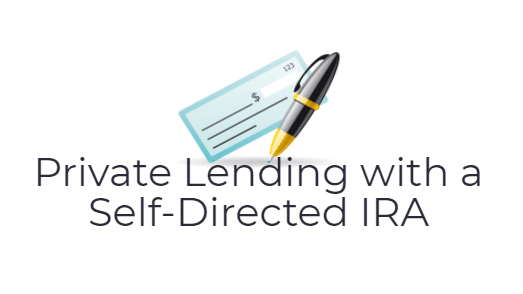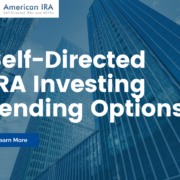Private IRA Lending: The Keys Every Investor Should Understand
For Self-Directed IRA investors, using such an arrangement is a great way to rely less on what the stock market does on any given day. That’s why so many investors turn to Private IRA Lending to diversify a portfolio with stable returns. But that isn’t to say this is a risk-free way to invest. What is Private IRA Lending, and what should investors know about it before getting started? We’ve put together a brief overview:
Understanding the Basics of Private IRA Lending
The basics are relatively simple, when you know how a traditional loan works. From the borrower’s perspective, very little will change. And as we note on our Private IRA Lending page, it’s not always easy to secure a loan from a traditional source. That means that individuals who want to secure a loan with specific terms may turn to Private IRA Lending because it’s possible to negotiate individually for specific terms.
From the lender’s perspective, there are some differences. For example, it’s possible to make a personal loan to someone that you know when you use personal funds. However, with Private IRA Lending, there will be specific transaction needs to think about. For example, you would not make a personal loan to a disqualified person when using a Self-Directed IRA. To do so would be to realize personal benefits from these funds, which goes against the purposes of the retirement account.
Once you know the basics of Private IRA Lending—both the flexibility possible and the contraints that come with a Self-Directed IRA—then you’ll be able to better navigate the future. But first, it’s important to know what sorts of options you have to choose from.
What Kinds of Self-Directed IRA Loan Options Are There?
From this perspective, there are plenty of different ways an investor might approach the situation. For example, a borrower who needs a secured note could do so with a Private IRA loan. Car notes, mortgages and trust deeds, and private business loans are other options available. Of course, these loans must still follow the laws regulating loans.
The Rules that Govern Private IRA Lending
Before you get started, it’s also important to know the lay of the land. There are some specific rules that every investor will want to pay attention to:
- You will have the freedom, within a Self-Directed IRA, to structure your repayment terms and the interest rates that will be paid. There is a lot of flexibility here, so long as you find a borrower who agrees to the terms. Of course, you proceed at your own risk—if the borrower ends up unable to meet overly stringent terms, the investment is at the risk of loss.
- Securing/unsecured promissory notes are both available. Again, you’ll have the ability to call the shots here, as long as you enter into a valid agreement.
- You should avoid prohibited transactions with disqualified persons. This was addressed earlier on. But a good rule of thumb is not to use Private IRA Lending for people you know, instead doing your due diligence and homework on an individual whose success with the loan does not benefit you personally.
- You should do your own due diligence. A Self-Directed IRA, after all, is all about putting the reins in your hands. You’ll be the one doing the homework, and a Self-Directed IRA administration firm like American IRA does not make specific investment advice.
Interested in learning more about Self-Directed IRAs? Contact American IRA, LLC at 866-7500-IRA (472) for a free consultation. Download our free guides or visit us online at www.AmericanIRA.com.







